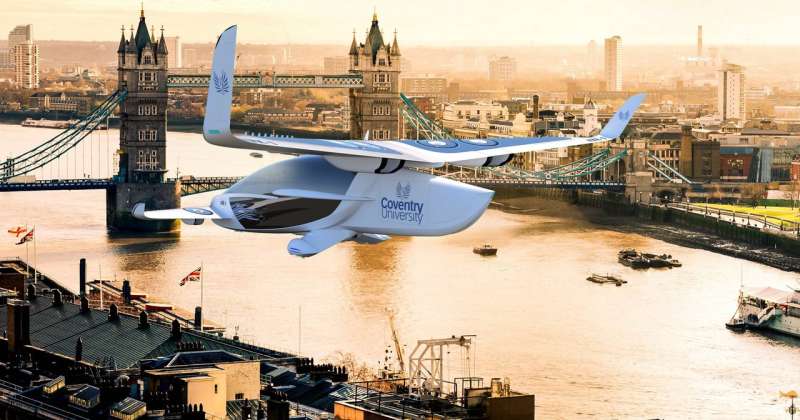Air taxis – why they're no longer pie in the sky

Imagine a taxi service that picked you up (into the sky) and then dropped you off after an exciting journey, completely free of road works and traffic lights. It has been claimed that air taxis could be flying us through the air in just a few years' time – and it's true that some big companies are speeding ahead with the idea.
Why? Well, to start with, we simply need to find better ways of moving around. By the year 2050, it is estimated that around 68% of the world's population will live in cities (compared with today's proportion of 55%).
This increase, combined with population growth, could add another 2.5 billion people to urban populations in the next few decades – leading to ever increasing urban traffic congestion across the globe.
In London (currently the most congested city in Europe), drivers spend on average over 72 hours – three whole days – in traffic congestion per year. The need for energy and transport solutions with minimal environmental cost is only going to increase.
Commuters will want ever more choice and more flexibility in their modes of transport – hence the interest in using the third dimension of airspace.
There are now over 120 concept Electric Vertical Take Off and Landing (EVTOL) vehicles and prototypes being tested across the globe. They range from scaled up drones, to electric and hybrid multi-rotor machines with or without wings.
Companies such as Uber (with expected gross revenues in the region of US$50 billion) are investing heavily in the sector. Boeing has acquired technology firm Aurora Flight Sciences to accelerate entry into the market. Airbus has three different projects on the go.
Flight of fancy
Previous attempts at building the flying cars of science fiction have failed to live up to expectations. So what's changed? In short, the electrification of cars has led to the creation of very high energy density batteries and much improved electric motor efficiency.
The availability of new lightweight and robust materials (such as carbon fibre) mean higher power to weight ratios. And the use of 3-D printing means that complex parts can now be printed in plastics and metals.
Drone technology and lessons learned from autonomous vehicles – like Lidar, short for "light detection and ranging" – can also be adopted, while the internet of things may finally mean that connected, seamless travel is indeed possible.
Companies like Rolls Royce are teaming up with industry and academia to provide workable, practical solutions. And although many of the 120 or so concept vehicles exist only on computers for the time being, a select few have built scale and full-size prototype "proof of concept" vehicles. Some are simply "learning by doing" – the very same approach adopted by Orville and Wilbur Wright in the pioneering days of flight.
Reach for the skies
As a service provider, Uber clearly sees air taxis as an extension of mobility options. Customers might expect to use a smart phone app similar to the ones currently in operation, but with the option to choose whether to be driven or flown to their destination.
But no matter how high these companies aim to travel, there are still barriers left to overcome. Air taxis would mean busier skies and higher air traffic concentration. Regulators will want to see stringent target levels for safety and security.
Simplicity of design will also be key. Battery technologies are improving but have some way to go to meet range requirements for even short urban trips. Automation is seen as a way to make operations safer but it is likely that early vehicles would need human pilots before moving to driverless air taxis in the future. Customer comfort and safety issues will have to be addressed, as will consumer confidence in using this kind of travel technology.
On top of all this, noise and emissions within an urban area must be minimised and vehicles will need to be able to operate in adverse weather. The cost of these vehicles will need to be affordable and this can only be achieved through large scale production.
There is already a shortage of commercial pilots, so new thinking will be required as to who will operate these machines. Seamless transport integration will require conveniently located "Skyports" and these will place increased demand on electricity supplies.
Without integrated air traffic management for air taxis, safety may be compromised. The technology on its own is not the answer, and the concept is unlikely to succeed without a wider view of the business model and operating environment. Joined up thinking will be needed. These future vehicles will not only need to overcome technological but also societal challenges.
Despite all that, unmanned and tethered flights for selected concept vehicles have already taken place, and it is likely that in the next two to five years we will see piloted demonstrations. Within the next five to ten years, we could see limited commercial operations in niche market sectors – but collaboration and joined up thinking will be paramount.
Provided by The Conversation
This article is republished from The Conversation under a Creative Commons license. Read the original article.![]()





















